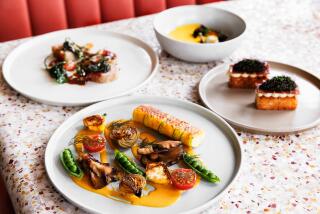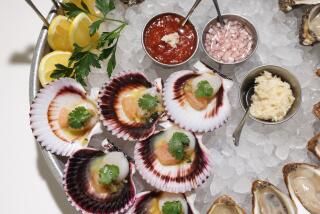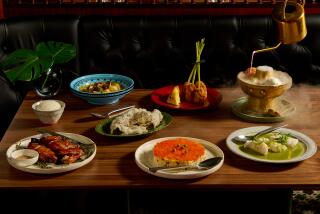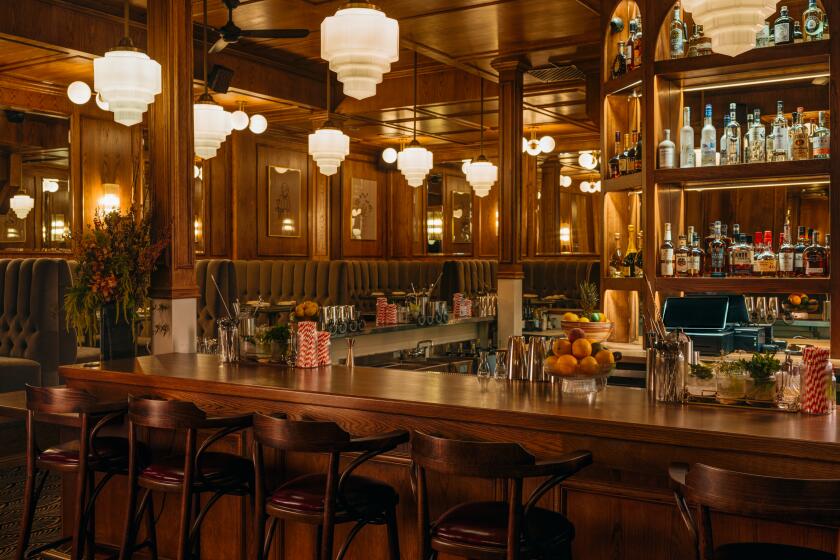Portugal and the Art of Dining Very Well
The Portuguese are champions at eating well. Snacking on cakes and pastries is a national pastime. Scarcely a street corner lacks a pasteleria, where a dozen egg and almond sugar cakes are offered with tea, coffee, a glass of Port or sticky cherry liqueur called ginginha. Red wine with 7-Up is a favorite.
The bistros that line the downtown streets here epitomize the original meaning of the word “restaurant”: a place that restores body and spirit. A chattering crowd, mainly men but some women too, surrounds tightly packed long tables. We squeeze into surprisingly comfortable chairs. Wine arrives in a water bottle, the famous vinho verde or “green” wine of Portugal, which is vinified early to retain fresh flavor and low alcohol.
I eyeball plates while the waiter spreads a white paper cloth and deposits dishes of olives, little pots of tuna, sardine and cheese spreads and slices of dark, chewy bread.
My neighbor is tucking into the dish of the day: fried salt cod with deep-fried baby potatoes, so I have the same. My husband opts for grilled fresh fish. Our son, ever adventurous, orders a mystery dish that turns out to be a scrumptious kind of cassoulet of green fava beans with bits of pork and smoked sausage.
As we relax over dessert--creamy rice pudding with cinnamon, rich flan and chocolate mousse--I look around the room. From the 10-foot-square kitchen, three busy women provide dishes for more than 60 customers. The cheerful servers are all male. The atmosphere is club-like: Drinkers line the bar, football scores are chalked on a blackboard, a vendor tours the room selling lottery tickets. As throughout Portugal, the coffee is top-notch.
This first meal in Portugal turns out to be an archetype. Hors d’oeuvres are universal, we discover, offered with bread for a small cover charge. They may include slivers of Portuguese dry smoked ham cured in paprika, slices of little dry sheep or cow cheeses and sardines pickled with onion, peppers and orange.
Main courses emphasize pork and the game in season--partridge, wild boar and hare. They come in dark, powerful sauces that are rich with wine and pungent with garlic, onion, bay leaf, smoked bacon, paprika and sometimes Tabasco sauce. The pork dishes vary from region to region. My favorite was porco con ame^ijoas, piquant pork with the little Venus clams familiar in Italian spaghetti alla vongole.
Portugal claims 500 miles of Atlantic coastline. No town is more than 150 miles from the shore, so fish is featured on every table. At a seaside version of the Lisbon bistro, a dozen fish and shellfish are on display, having landed that morning at the little port up the road. We choose fish soup, a rich bisque studded with shrimp, then whole sea bass baked in a salt crust. The waiter chips off the crust, lifts the lid, then peels the skin without letting a grain of salt contaminate the flesh. Served with warm olive oil, lemon and fresh cilantro, the fish embodies the taste of the sea.
The pleasures of good food permeate all aspects of life in Portugal. As we tour the magnificent abbeys and monasteries dating from the days of Vasco da Gama and Magellan, I’m amused to find constant reminders of cooking. A little pig peers down in the form of a gargoyle. In a hall overshadowed by statues of kings, the only furniture is a giant bronze caldron captured in some long-forgotten battle. Cloister gardens are shaded with orange trees and planted with thyme and rosemary, their arched colonnades decorated with cardoons, poppies and artichokes carved in stone.
At Alcobaca, north of Lisbon, more than 1,000 monks were nourished from a single astonishing kitchen, the walls tiled more than 60 feet up to the vaulted ceiling. The central fireplace--one of three--vents to twice that height, while around the walls eight tanks and sinks of marble were fed by a branch of the river Alcoa, diverted for that purpose. Such installation made it the award-winning restaurant of the day.
In the late 18th century, writer William Beckford reported on Persian rugs, silver jugs and saucers on the tables, mountains of game, mounds of white flour and heaped-up sugar cones. For his dinner he was given excellent sausages, lampreys and foods from Asia and Brazil, including swallows nest soup and sharks fins prepared by a Chinese lay brother.
The details may be different in today’s Portugal, but the same relish for good living is very much alive.
PORK WITH CLAMS (Porco con Ame^ijoas)
I find our littleneck or cherrystone clams an excellent alternative to European clams in this recipe. If you like food hot, sprinkle a few drops of Tabasco sauce on top just before serving.
30 small clams (such as Manila, little neck or cherrystone)
1 1/2 pounds pork tenderloin
1 tablespoon paprika
1 tablespoon flour
Black pepper
1/4 cup olive oil
1 onion, chopped
3 to 4 cloves garlic, crushed
2 bay leaves
2 tablespoons water
2 tablespoons tomato puree, optional
Wash clams, discarding any that do not close when tapped on work surface. Trim any sinew or fat from tenderloin and cut it into 1-inch cubes.
Mix paprika, flour and pepper to taste and toss with pork cubes until well coated with mixture. Do not season with salt as clams may be salty.
Heat 2 tablespoons olive oil in large skillet. Add pork and saute over medium heat until browned on all sides, stirring often, 5 to 7 minutes. Do not crowd pan--brown pork in 2 batches if necessary. Reduce heat. Cook, covered, 8 to 10 minutes.
Meanwhile, heat remaining 2 tablespoons oil in shallow casserole. Add onion and saute until beginning to brown. Stir in garlic, bay leaves, water, tomato puree and pepper to taste. Set clams on top. Cover and gently cook until clams just open, 5 to 7 minutes. Discard any that do not open (do not overcook clams or they will be tough.)
Stir pork into clams and heat 1 to 2 minutes longer. Discard bay leaves. Adjust seasonings. Serve in casserole.
Makes 4 servings.
Each serving contains about:
325 calories; 90 mg sodium; 98 mg cholesterol; 17 grams fat; 8 grams carbohydrates; 34 grams protein; 0.61 gram fiber.
More to Read
Eat your way across L.A.
Get our weekly Tasting Notes newsletter for reviews, news and more.
You may occasionally receive promotional content from the Los Angeles Times.






